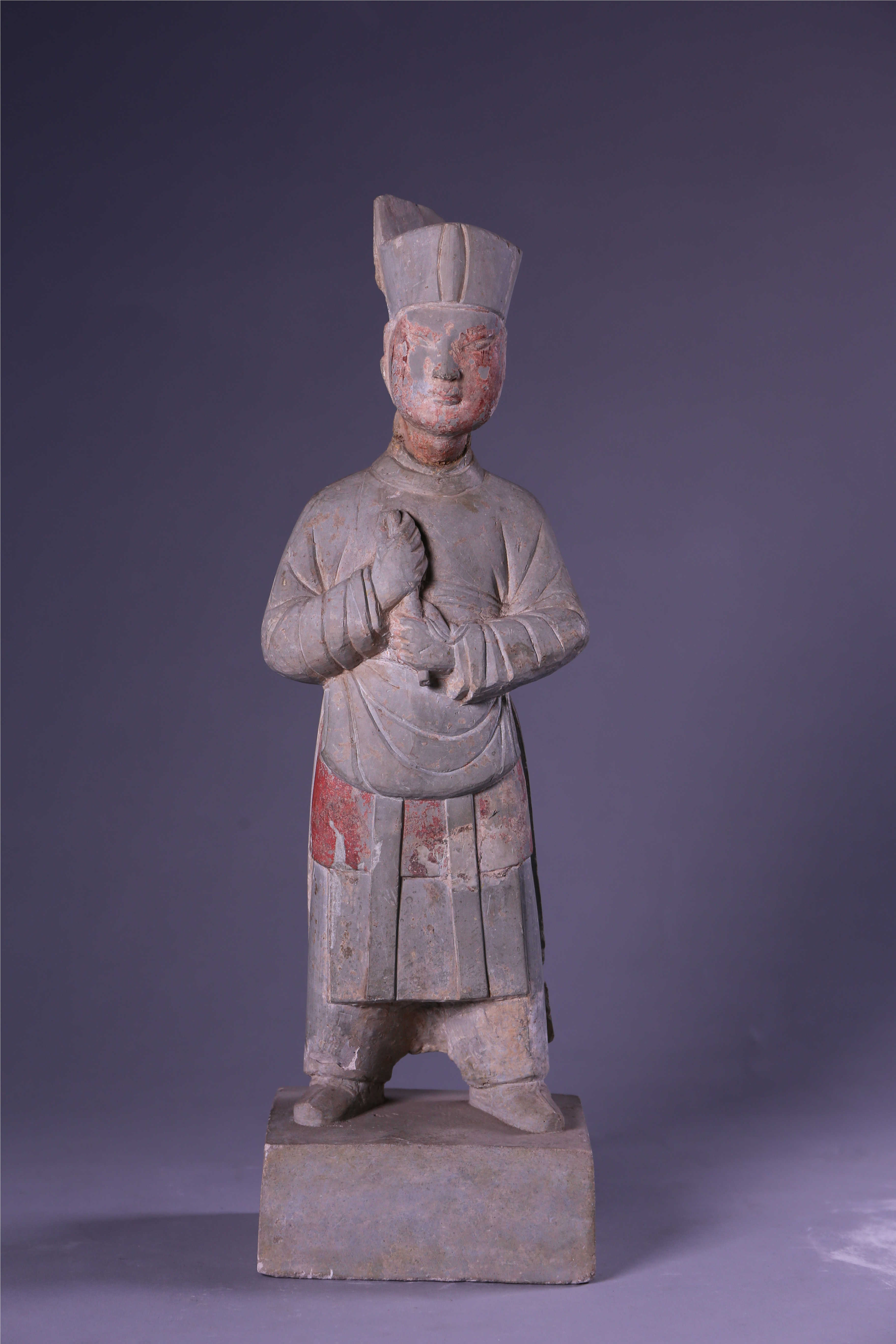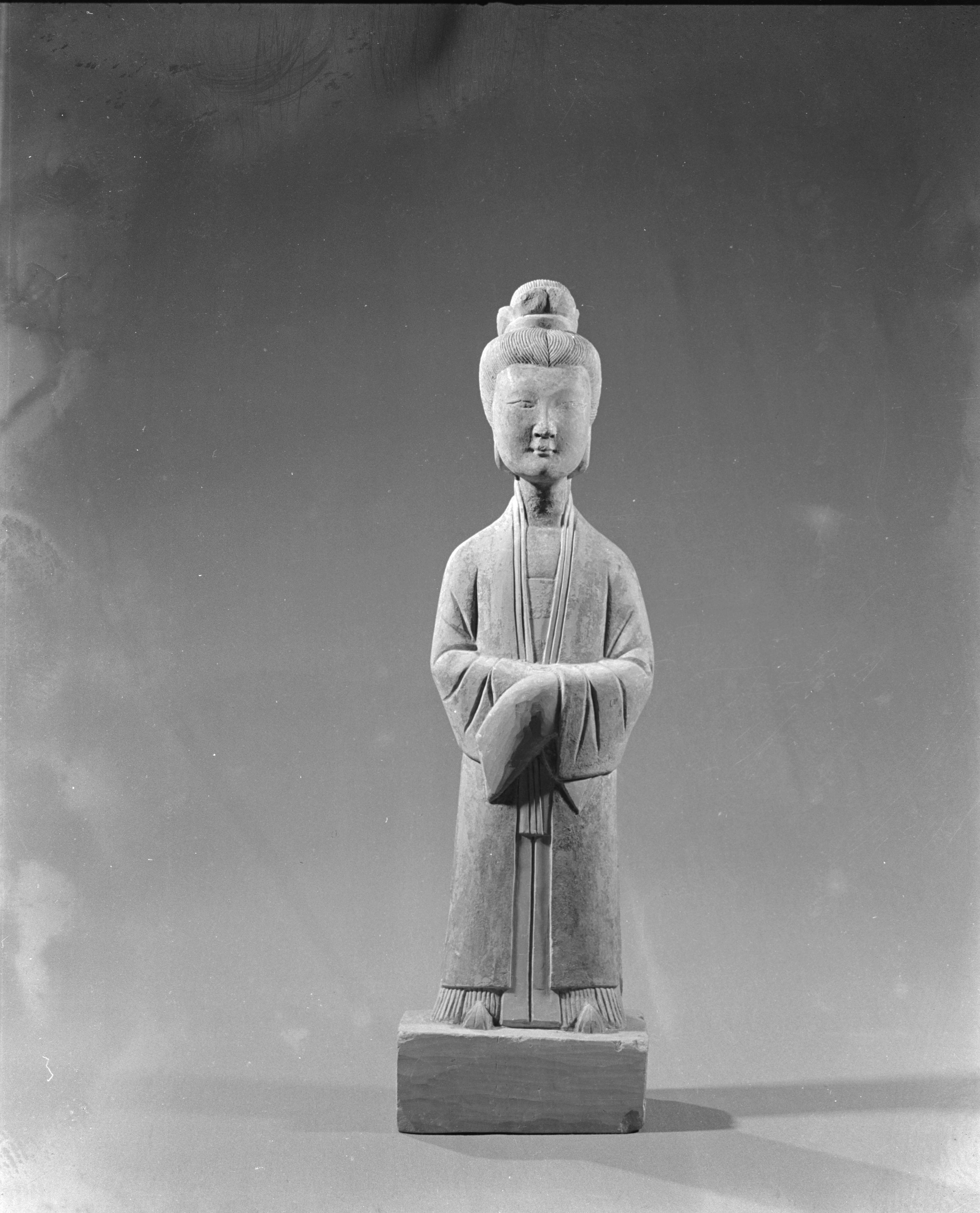
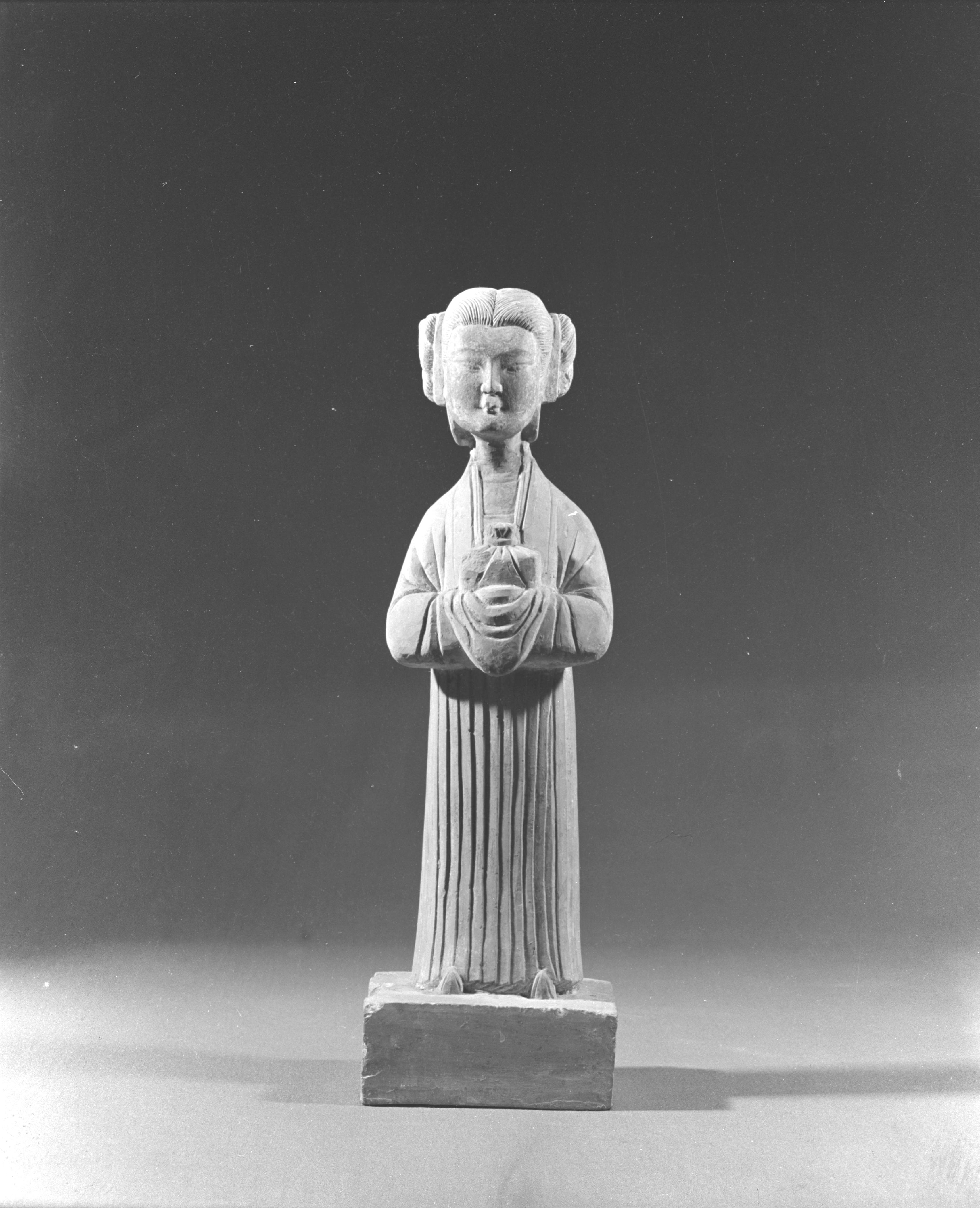
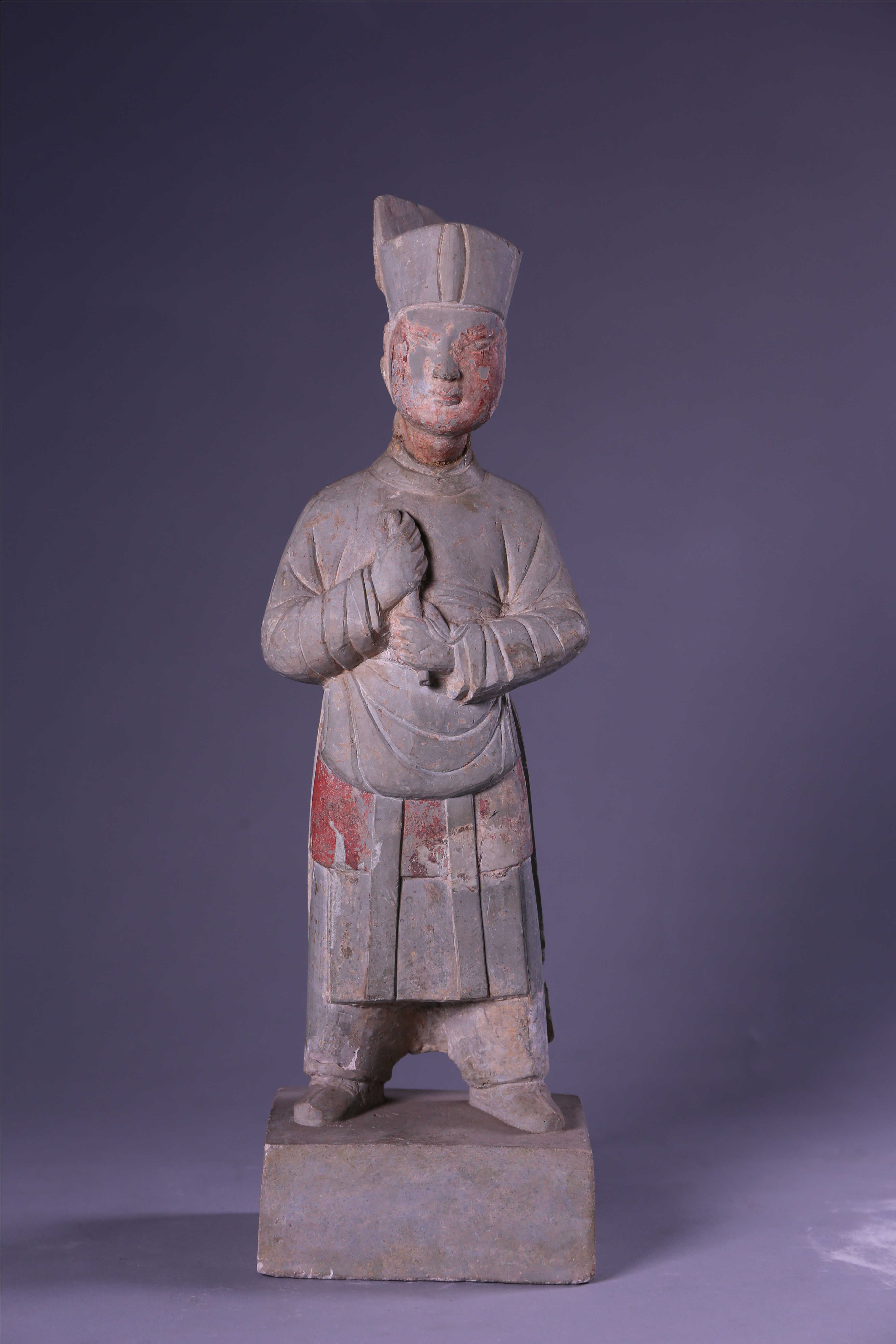
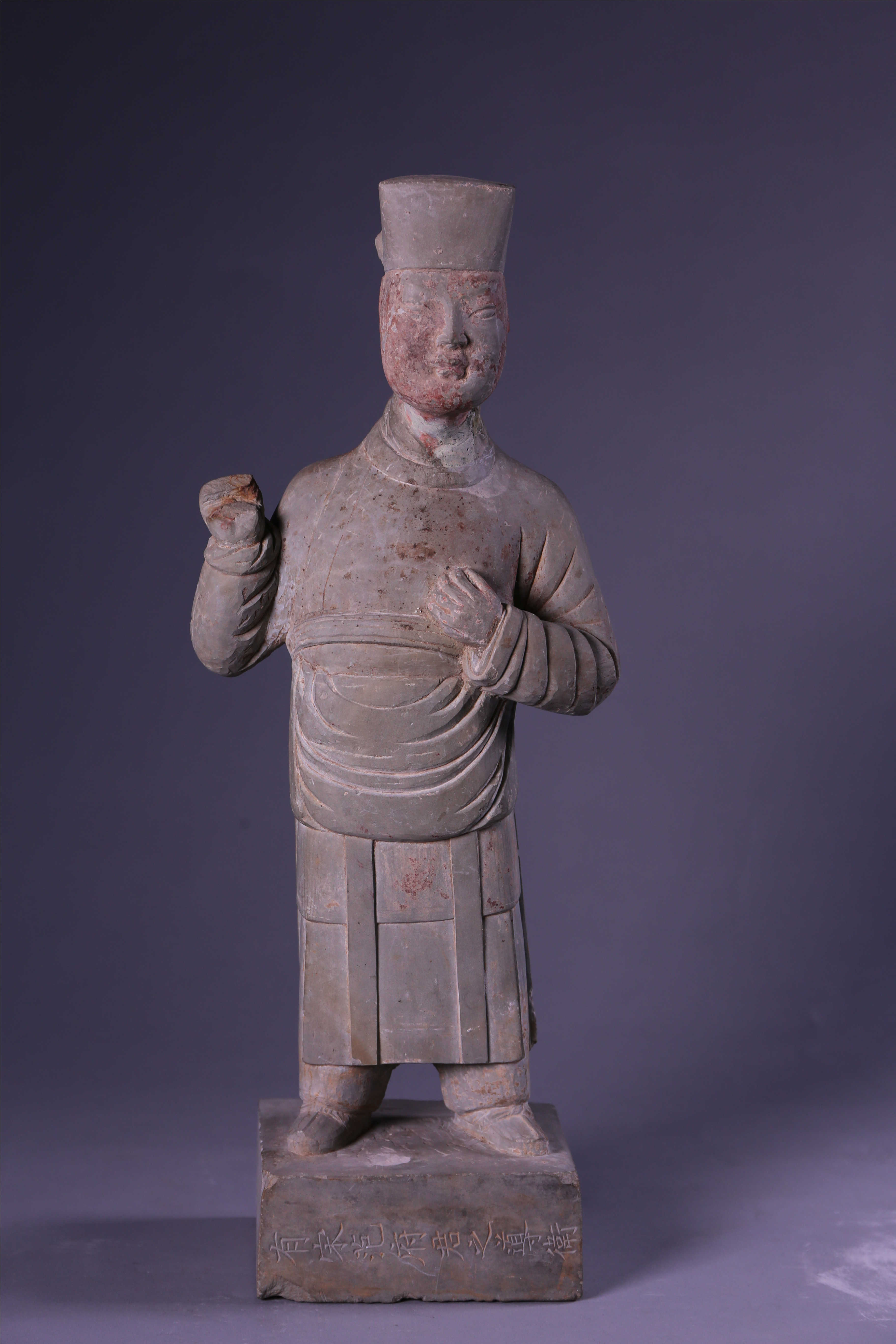
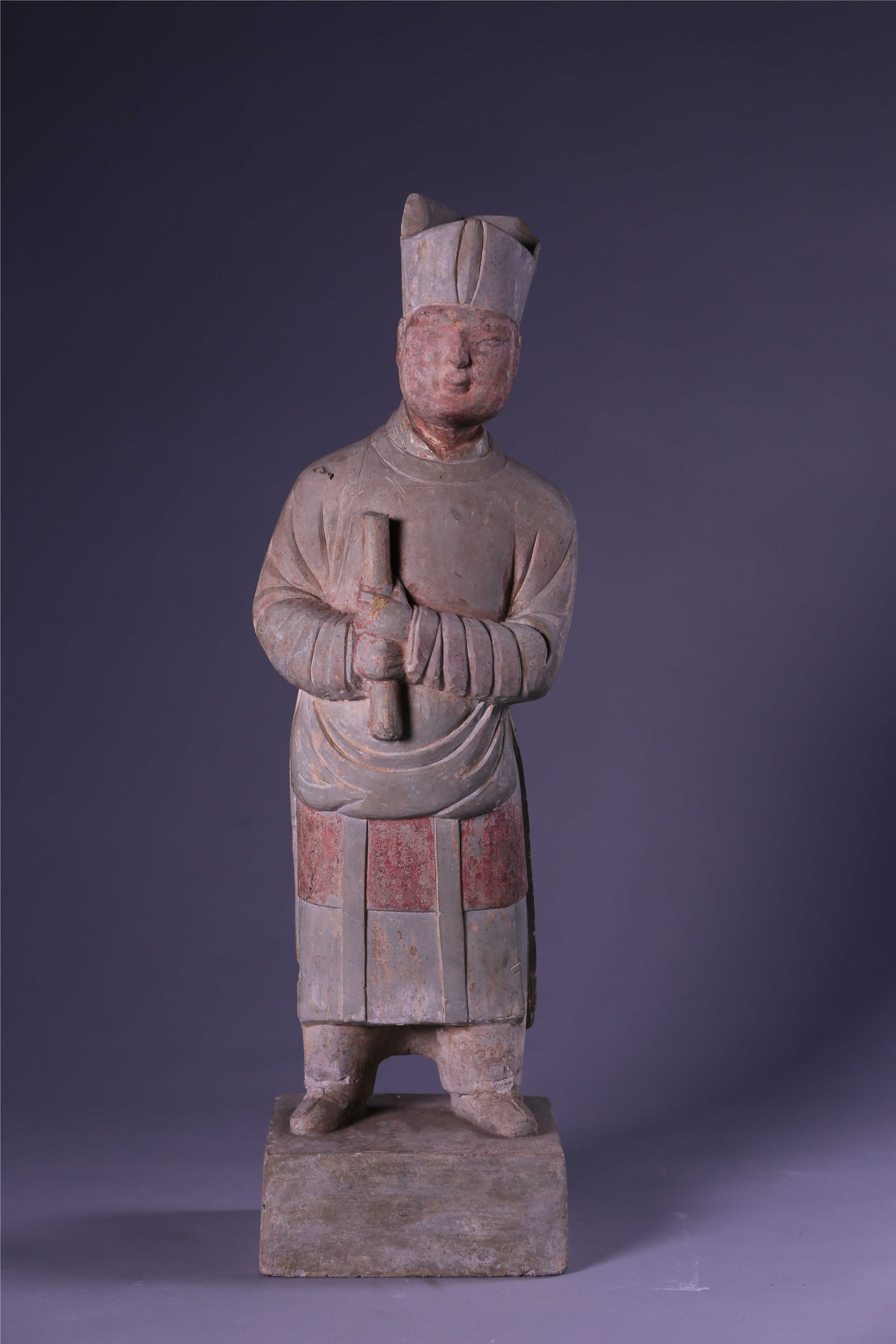
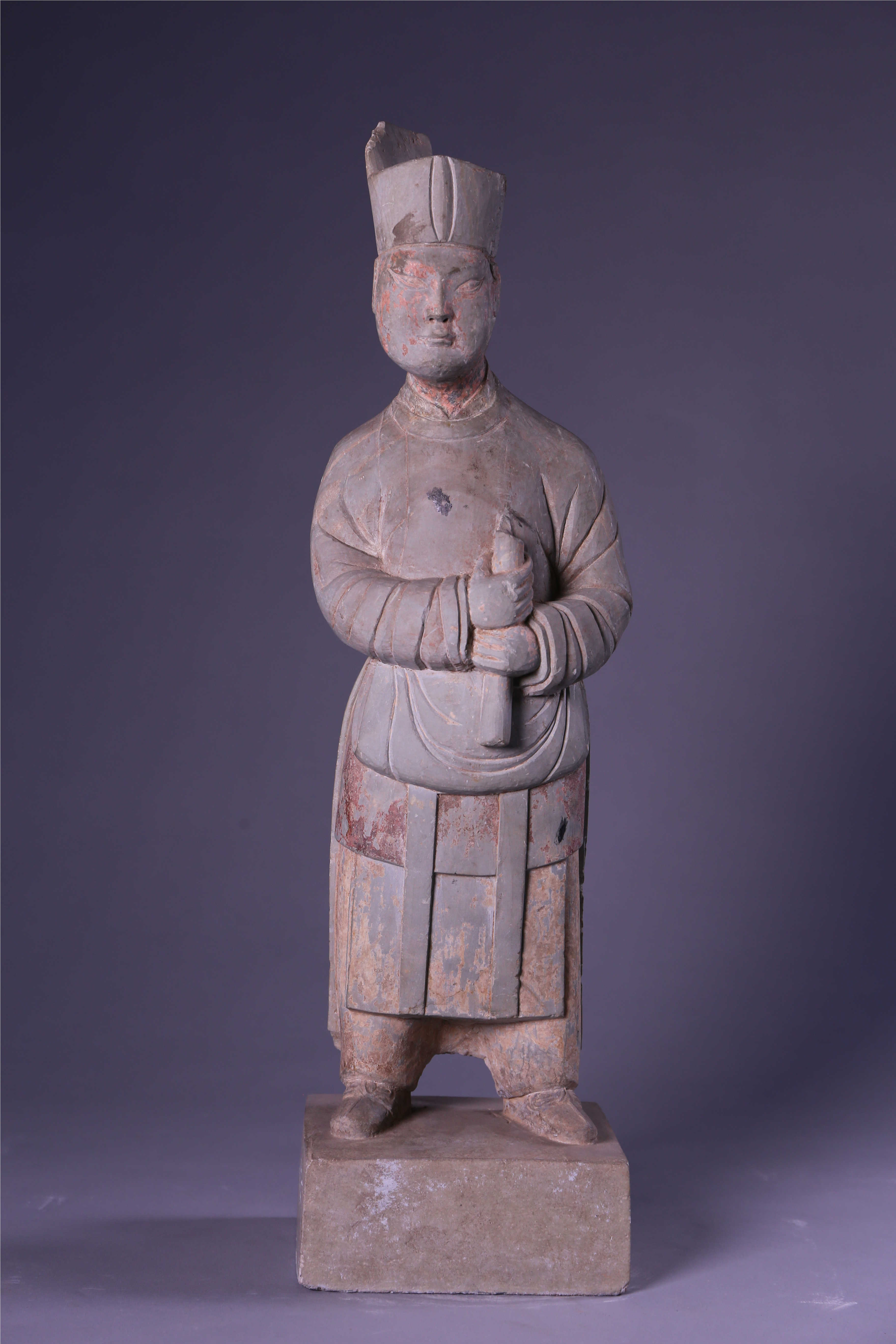
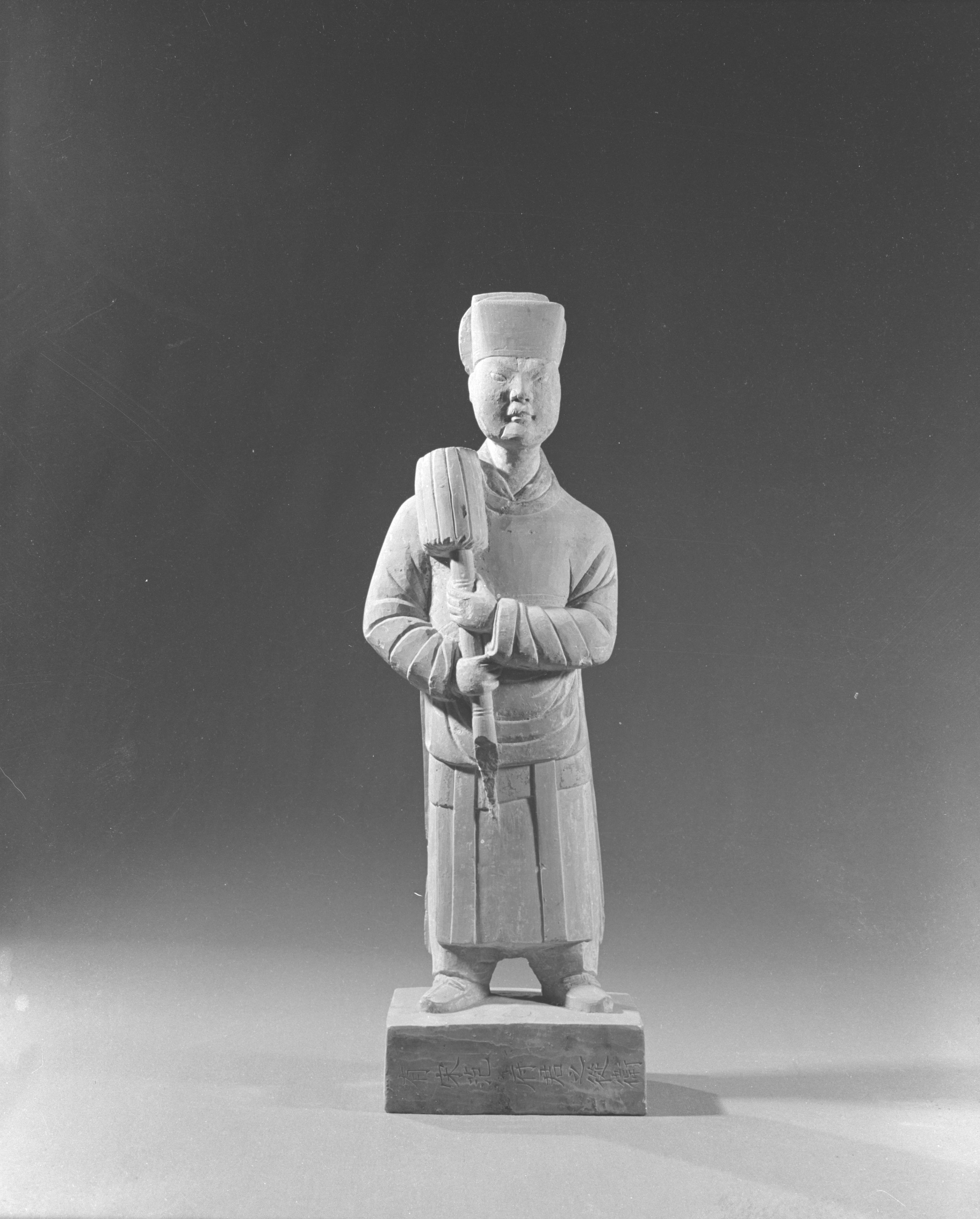
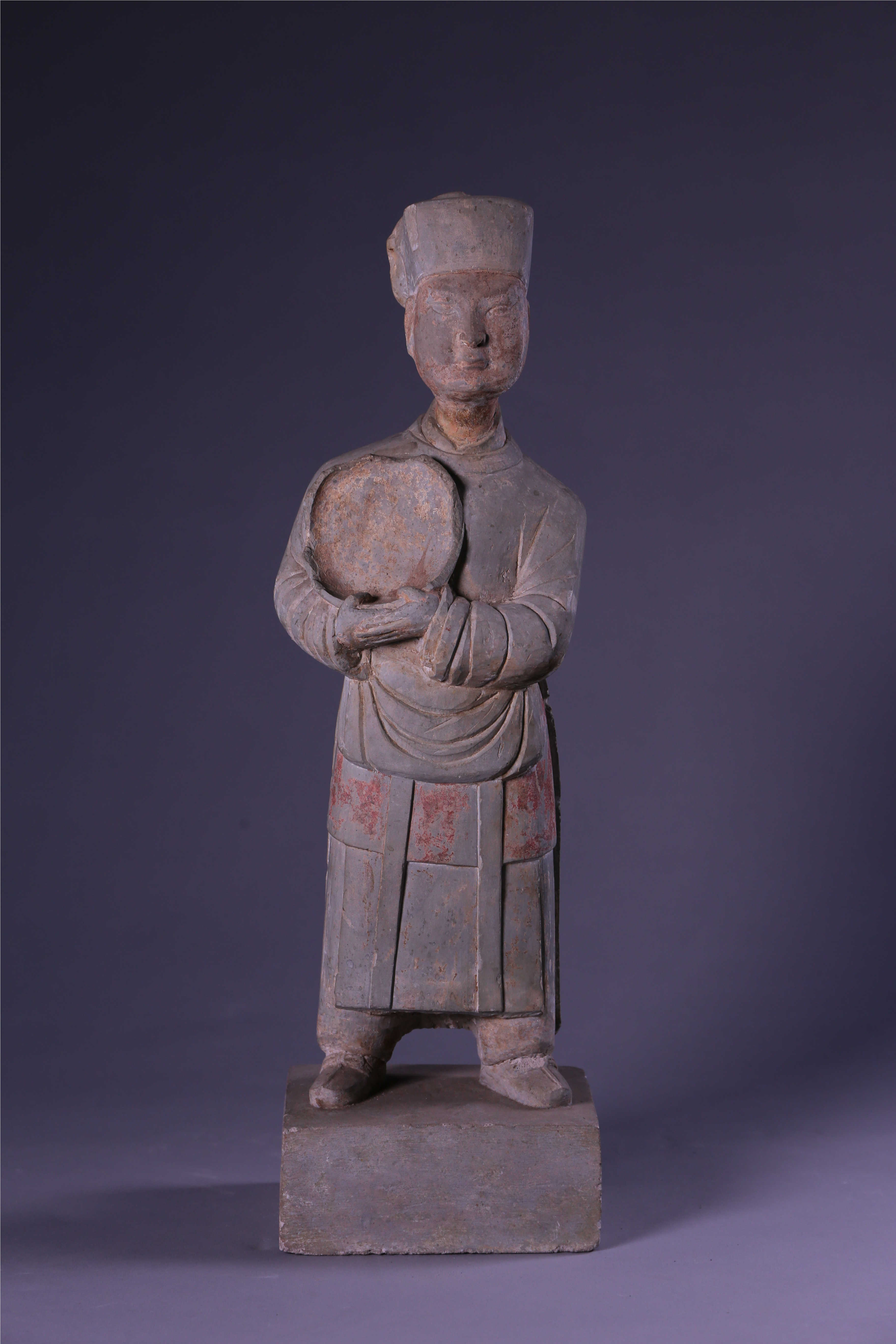
Date: Northern Song Dynasty (960-1127)
Provenance: Unearthed from the tomb of Fan Tongzhi of the Northern Song Dynasty, Fangcheng county, Nanyang, Henan province
Measurements: Height: 37-46 cm
This group of stone figurines was excavated from the tomb of Fan Tongzhi and dates back to 1094, during the reign of Emperor Zhezong of the Song Dynasty (960-1279). Fan Tongzhi was the father of Fan Zhixu, a high-ranking official serving as the assistant director of the left in the Department of State Affairs (Shangshu zuocheng) during the reign of Emperor Huizong (r. 1100-1126).
The male figurines within the group, likely honor guards or servants representing lower-ranking officials or attendants, wear narrow-sleeved garments with belted waists, allowing for frequently engaging in errands. The lower part of the garment drapes over the belly with a cloth resembling an apron wrapped around the abdomen. The lower body was dressed in long trousers paired with boots or shoes.
In contrast to the male figurines, the female ones exhibit different clothing styles, portraying the common attires of maidservants in the Northern Song Dynasty. This includes the ru wore by young maidservants and the beizi worn by the elderly or senior maidservants. The ru is a traditional short garment, typically worn with the front open, parallel collars straight at the front and narrow sleeves, while its lower part is tucked into the skirt. The beizi is a kind of outer garment prevalent during the Sui and Tang dynasties (589-907), it is short in length and features half sleeves. In the Song Dynasty, it evolved into longer sleeves and lengths, ranging from the mid-length beizi covering the knees to the long-length beizi reaching the ankles.
The intricately carved group of stone figurines exhibits a high level of skill and graceful lines. The detailed representation of their attire provides a valuable reference for understanding the clothing styles of officials, servants, and maidservants in the Central Plain, as well as the social outlook during the Northern Song Dynasty.

